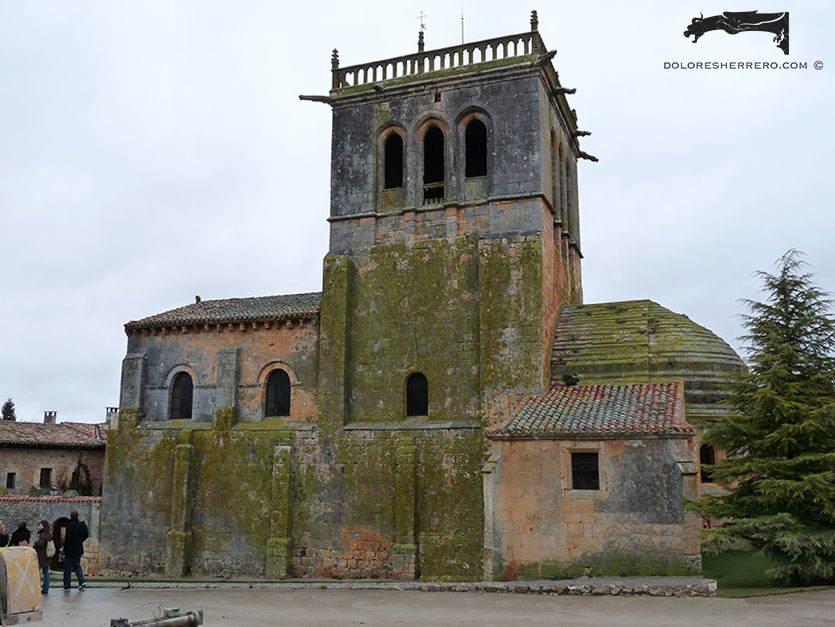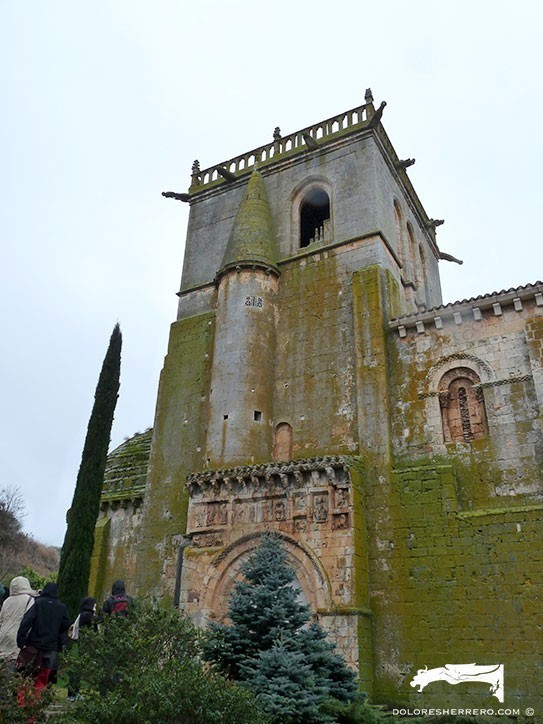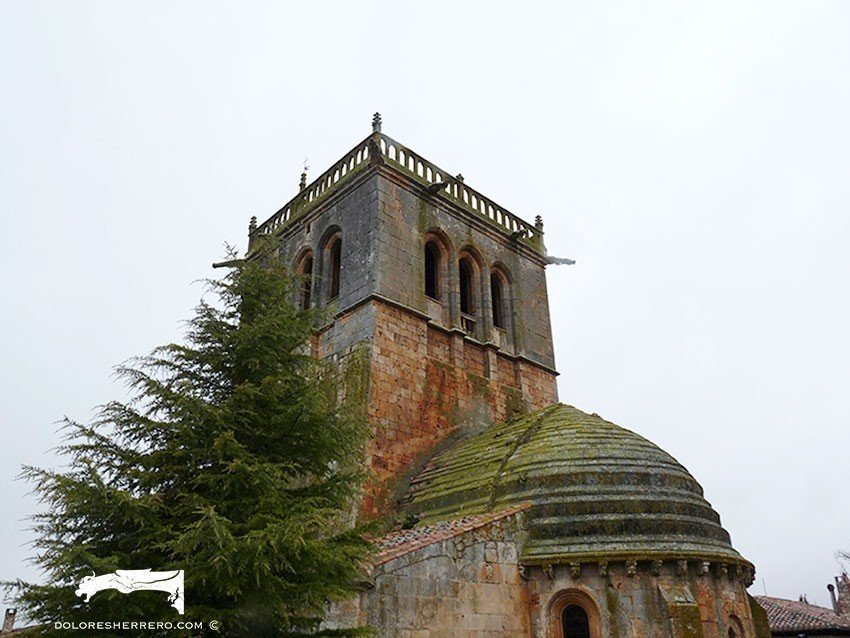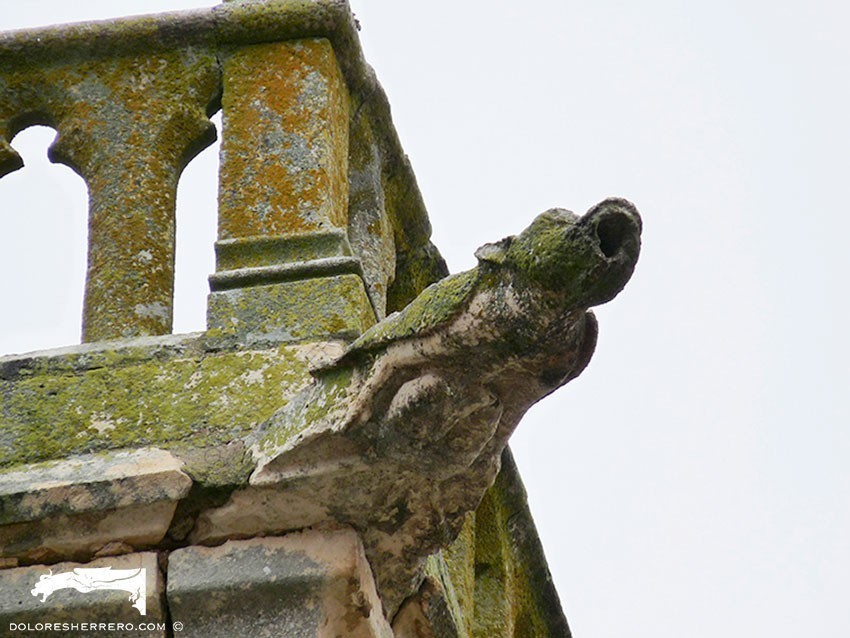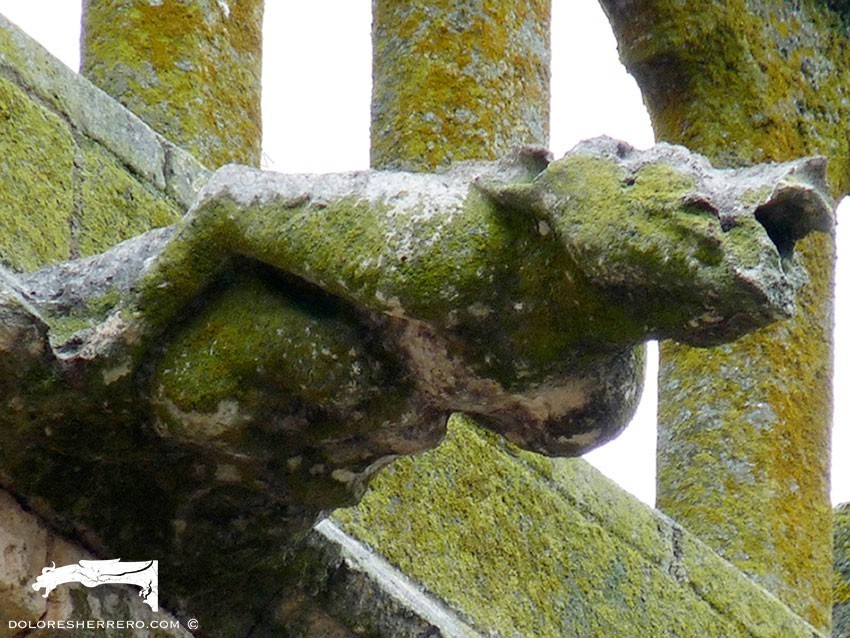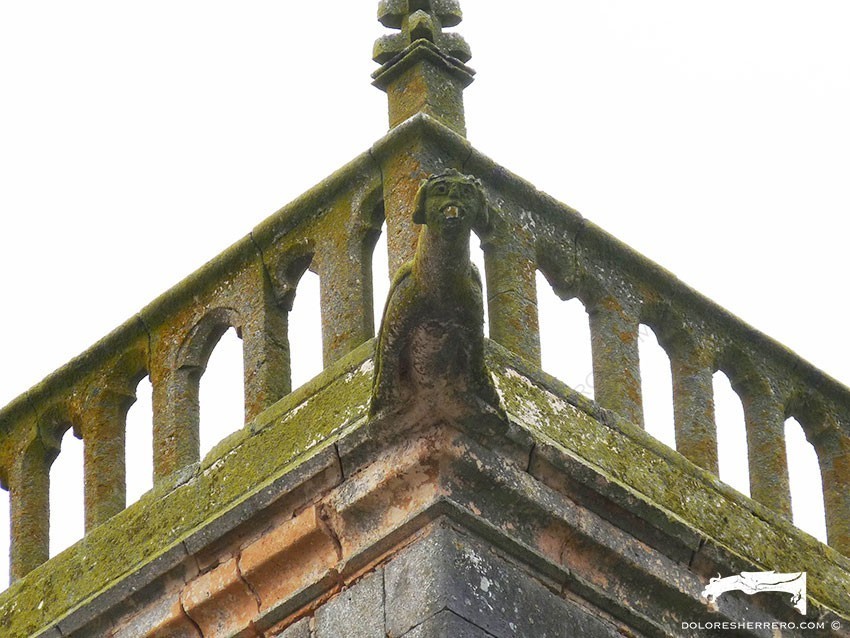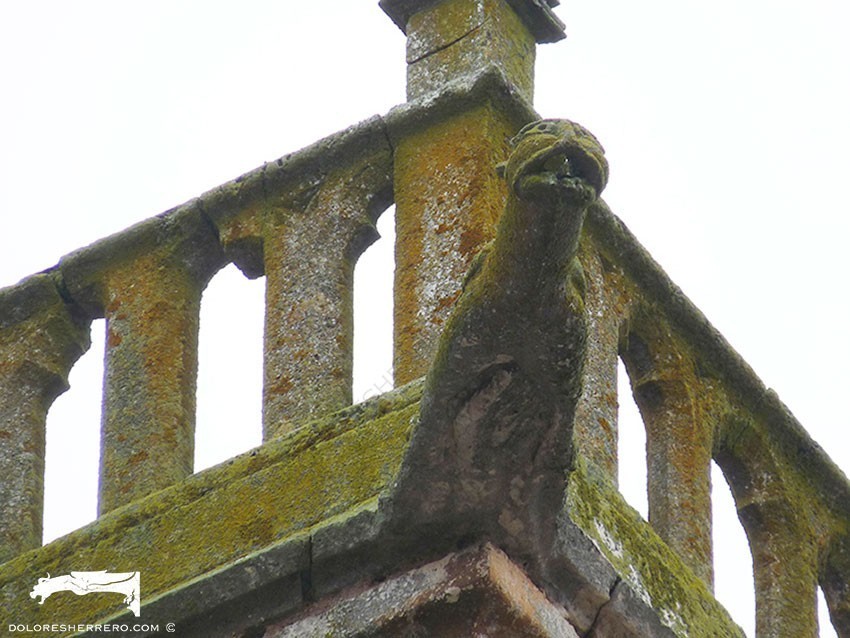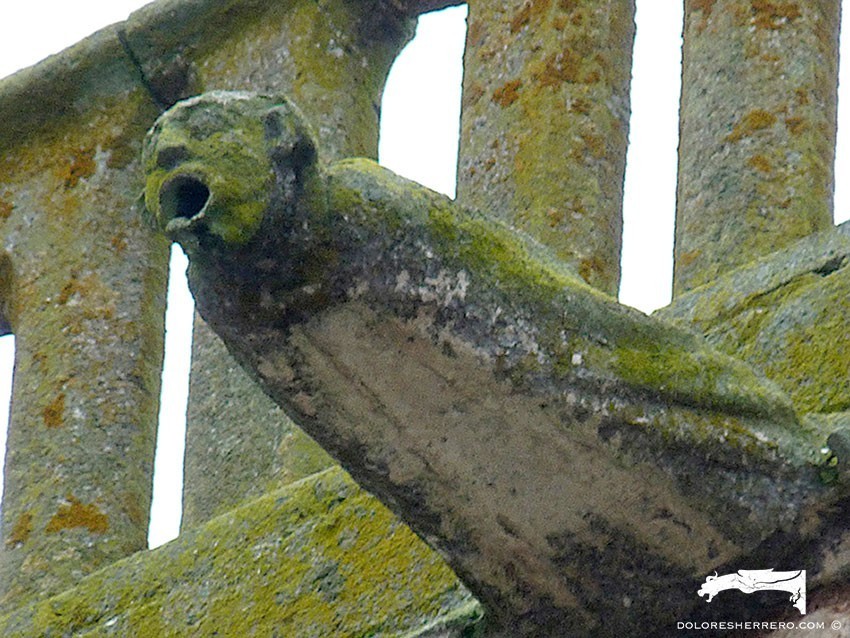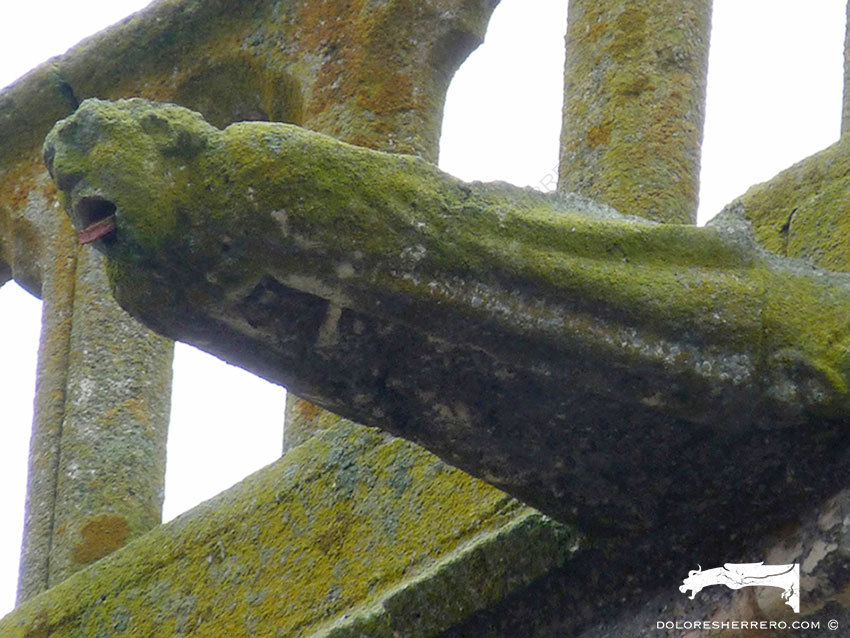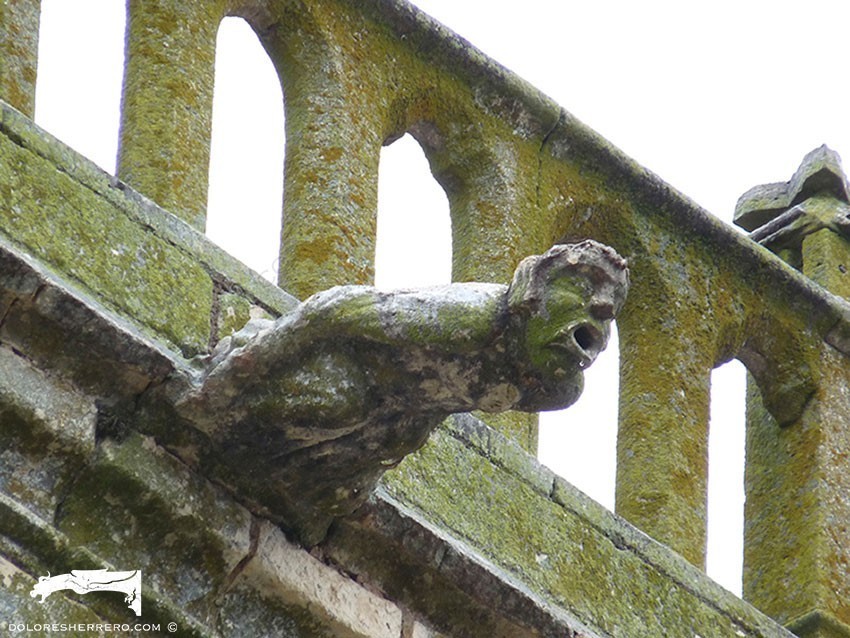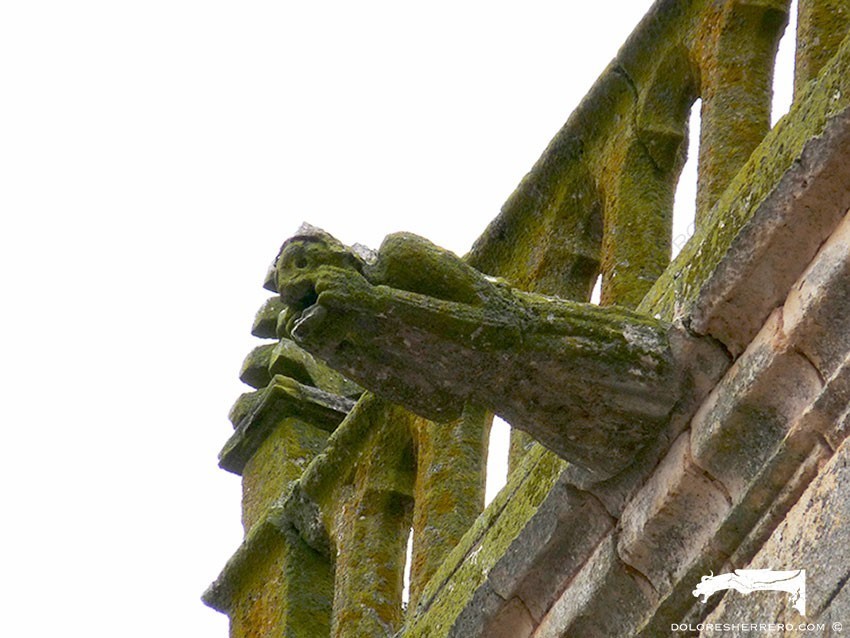Los Ausines (Burgos, Spain) is home to one of the treasures of our Romanesque period, none other than the church belonging to the old Castilian monastery of San Quirce.
The monastery is said to have legendary origins. According to tradition, it was founded in 929 by the Count of Castile, Fernán González, to commemorate his first victory over the Moors.
Although the church itself is Romanesque, the top of the tower is Baroque. It was built in the 17th century and it’s here that the magnificent gargoyles can be seen.
Gargoyles
Despite being quite badly weathered, which as you know, prevents us from appreciating their fine detail and even identifying their type, they are all very eye-catching figures.
There are two quadrupeds, one of them winged. Both have a grotesque head beneath the body, although they are very worn.
There is also a man pulling the hair of two human figures underneath him, which could perhaps be an anthropomorphic devil grasping two sinners.
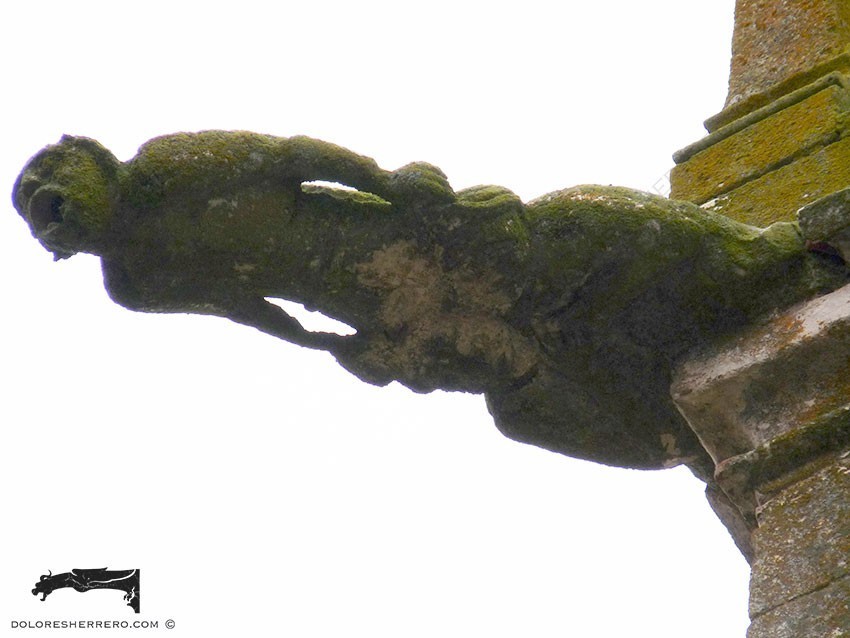
One anthropomorph has the body of a winged quadruped and a human head with hair that resembles a crown. Another one has slightly almond-shaped, hollow eyes, a large triangular mouth and on the body you can just see a snake-like shape that might be part of a figure.
The human figures are splendid. They are clothed men, two with long tunics and one crouching with his arms down the side of his body. We can also see another two men with gestures commonly seen in gargoyles: one is pulling his hair as a sign of anger or madness, and the other is pulling his mouth, a gesture with a variety of meanings, depending on the author (unconcerned, related to greed).
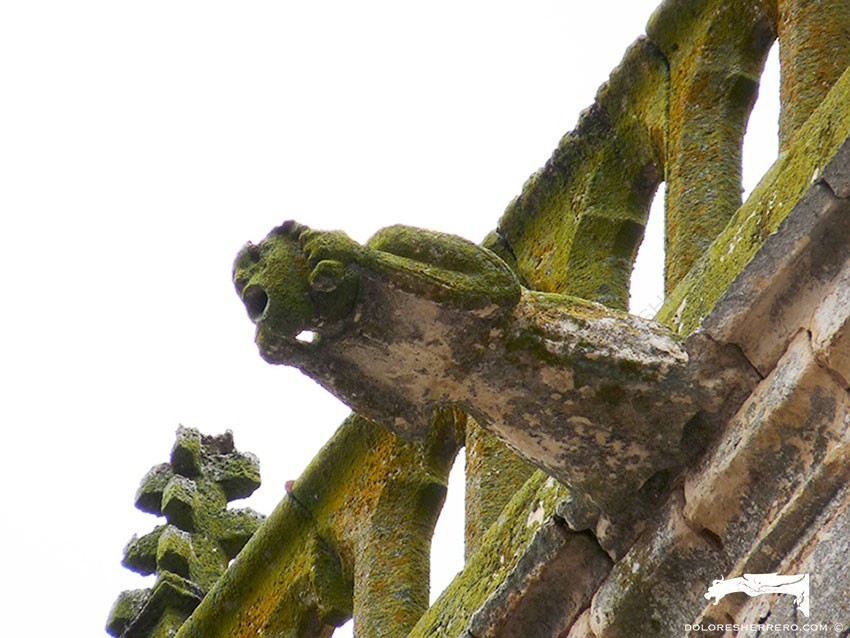
From time to time we’re lucky enough to find some really unusual gargoyles, figures unique to a particular building that would be difficult to find elsewhere. This is the case of the San Quirce gargoyles and although they belong to a fairly common type, they have a very peculiar style. They are all superb and very stylised gargoyles.
Bibliography consulted
REBOLD BENTON, J., Holy Terrors. Gargoyles on medieval buildings, New York, Abbeville Press, 1997.
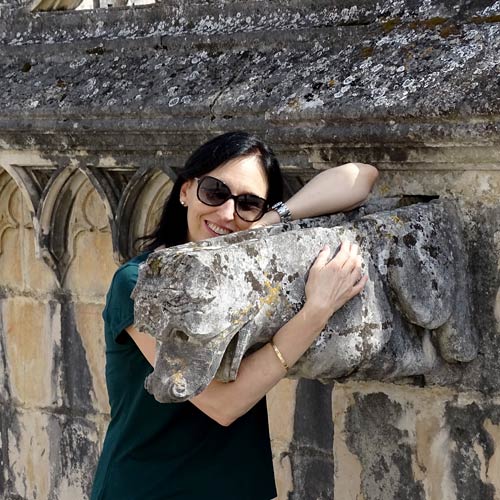
Doctor of Art History and researcher specializing in the study of gargoyles.
I am Dolores Herrero Ferrio, and my thesis, “An Approach to the Study of Gargoyles of Gothic Cathedrals in Castilla and León”, is dedicated to the study of these fascinating figures.
If you like gargoyles and art history, you will also enjoy my book, “The Gargoyle and Its Iconography,” a book I have written with great care for those interested in the world of gargoyles.
I have created my own Encyclopedia of Gargoyles, a Gargopedia to share with you, where you will discover all the secrets and wonders of these enigmatic sculptures.
I hope you enjoy this Gargopedia as much as I have enjoyed creating it, and remember that each gargoyle has a story to tell, and here you will discover them all.
